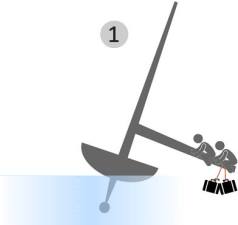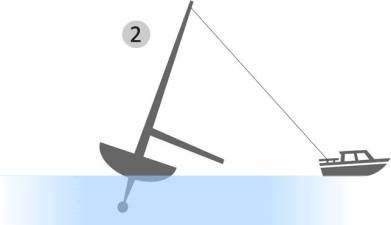Shallow waters
Introduction
Embarking on a sailing adventure in the Greek islands, with their alluring sandy beaches and crystal-clear waters, is a dream for many.
However, beneath the picturesque surface lies a significant challenge for sailors - navigating shallow waters.
Identifying the Problem
Shallow waters pose a formidable threat to seafarers, especially during instances of tidal changes, causing drafts, and potential boat grounding.
Issues such as grounding, particularly during low tide, are explored, considering the morphology of the seabed and its impact on vessel safety.
Hotspots for Grounding:
Certain areas present higher risks for grounding, considering both seabed morphology and approach speed.
Sailors are urged to exercise heightened awareness in these regions, adapting their sailing strategies accordingly.
1. Grounding on Smooth Sandy Seabed
Approaching a smooth, sandy seabed with high speed may lead to the boat getting stuck.
While this scenario is likely to result in minimal damage, it's crucial to be aware of potential risks.
Grounding on soft, even surfaces can cause temporary immobilization, emphasizing the importance of adapting sailing speed to the seabed's characteristics.
2. Grounding on Abrupt Elevation (Sandy or Rocky):
In contrast, approaching an abrupt elevation, whether sandy mound or rocky outcrop, with excessive speed poses a different set of challenges.
In such cases, the boat may avoid getting stuck but is at a high risk of losing important equipment, including the mast.
Additionally, there is a considerable likelihood of hull damage, particularly around potential cracks in the hull caused by the impact.
Potential Crew Injury from Abrupt Grounding
It's essential to highlight that abrupt grounding, especially on rocky surfaces, not only poses a threat to the boat but also significantly increases the risk of crew injury.
Instances have been reported where crew members, ejected from the cockpit during sudden impacts, landed in the saloon area.
Understanding the potential for crew members to sustain injuries due to abrupt grounding underscores the critical importance of maintaining a safe speed and navigating with caution to ensure both the vessel and its crew's well-being.
1. Leverage with Boom and Weight Method
 Drop the sails and start the engine. Try to motor out of the situation.
Drop the sails and start the engine. Try to motor out of the situation.- Get as much weight as possible onto the end of the boom, including luggage as necessary.
- Push the boom out to right angles from the mast and have the crew lean out of the boat, holding the boom.
This will transfer the weight onto the side of the boat and with the buoyancy of the hull, the keel should come off the bottom. - Put your engine on full astern or ahead to try to get out of trouble.
- Rock the boat end to end. The crew should stand on the bow and dash to the cockpit and back.
- As the vessel is bow or stern deep you should put on full throttle astern or forward to dry to get off the shallows.
- If you can’t stem the wind blowing you towards the shore, drop anchor.
2. Towing with Dinghy Method

If you do not manage to get the keel off the bottom by moving weight you should consider getting someone else to help.
- You should unclip your mainsail halyard or topping lift, and pass this to another boat.
They should go at right angles to the direction you are pointing (though preferably out to sea).
Your vessel will ‘fall off’ its keel and start to float on its side. - At this stage, pass a mooring line from the deck of your boat with one end attached amidships to the towing vessel.
They should tow you into deeper water (they should use their sounder to find a sensible depth. - Drop anchor. Sort yourself out by stowing baggage, tidying up lines and so on.
You may at this stage wish to have a quiet night aboard - unless you want to be the centre of attention for the fun you had that day in the bars or restaurants!
CAUTION
In the case of bareboat rentals, it's essential to standardize the measurement units for depth.
Ensure that the depth gauge is matching your navigational charts.
An example of the confusion that can arise:
Imagine you assume you're observing the measurements in meters, while a previous renter had switched the depth gauge to inches, leading to misinterpretation and potential navigational errors
Conclusion:
By acknowledging these nuances, sailors can mitigate risks, prevent damages, and fully appreciate the beauty of the Greek archipelago from the deck of their vessels.

